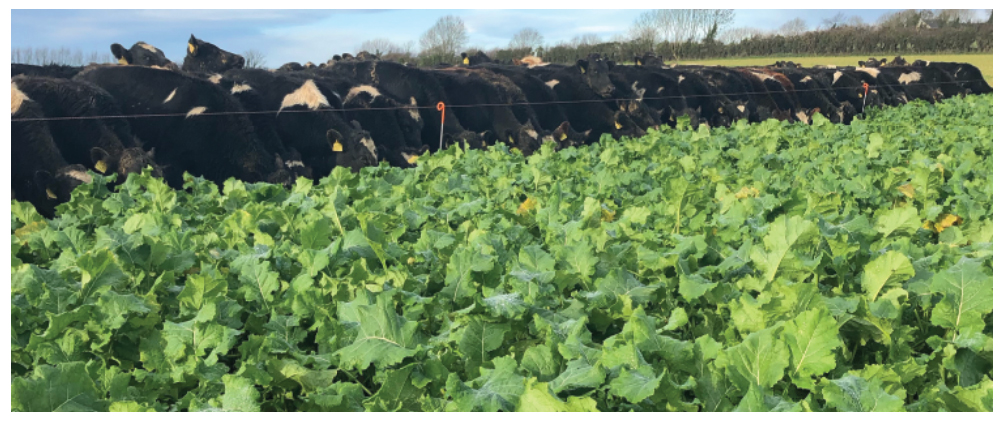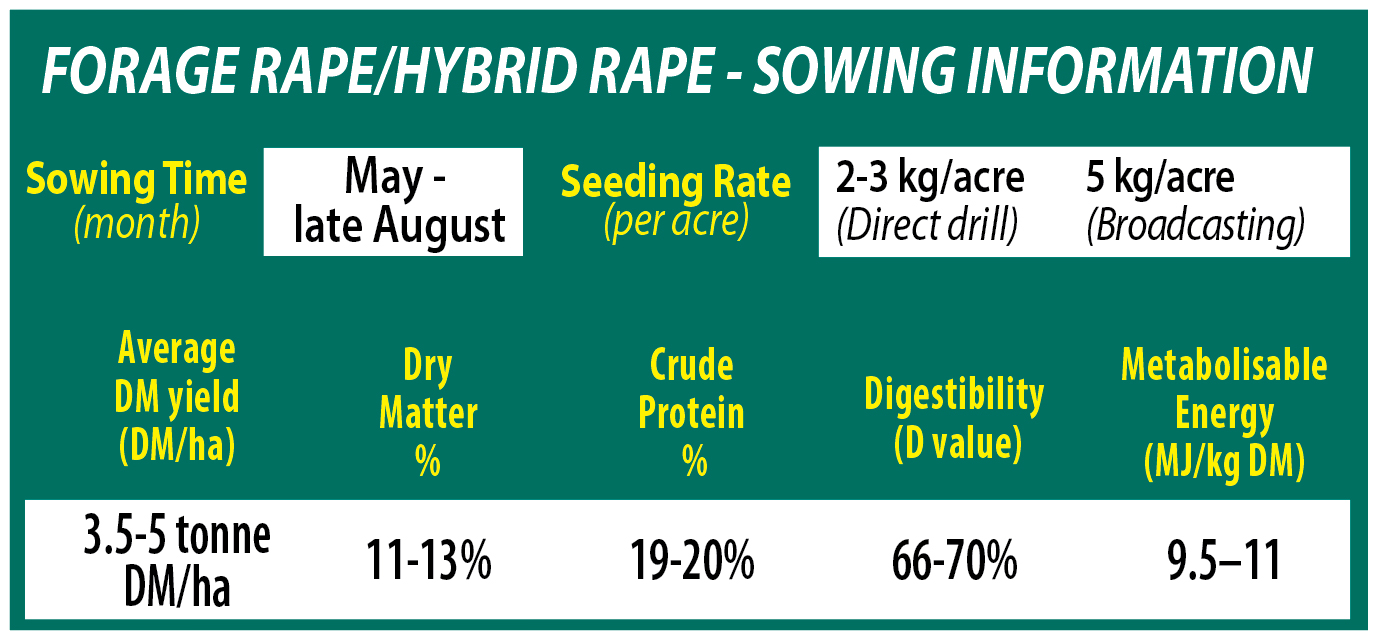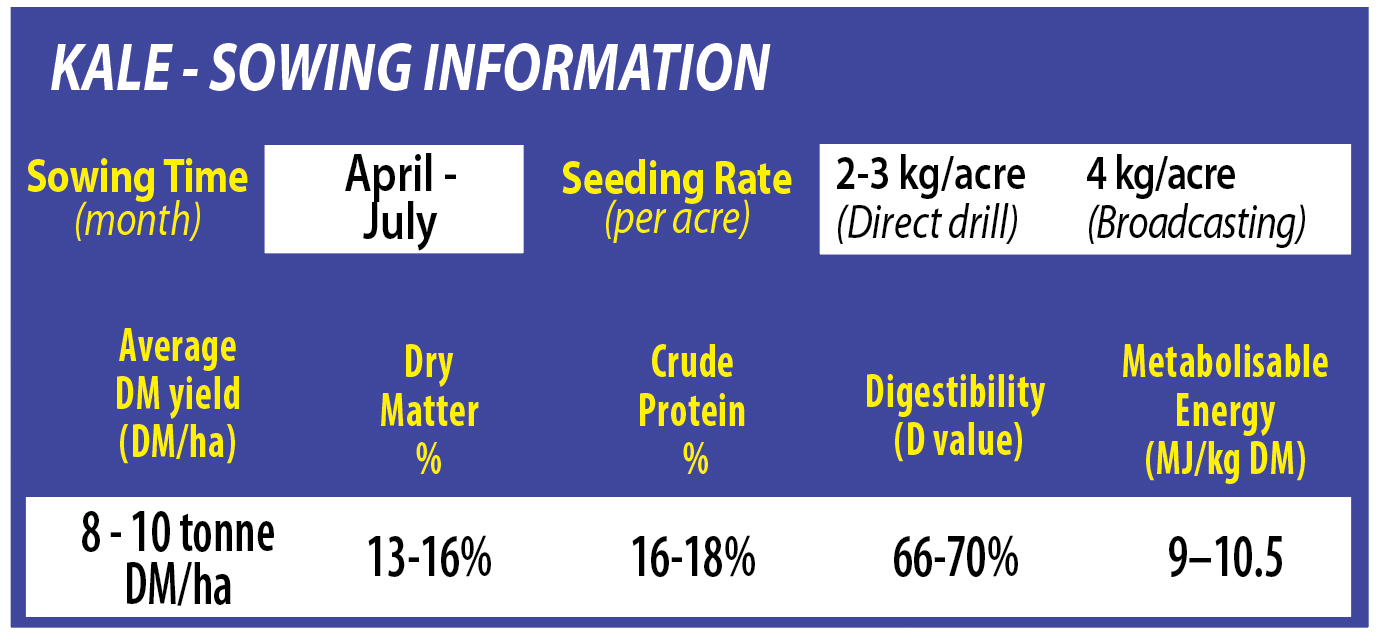 Brassica crops can provide nutritious, cost-effective feeds for cattle and sheep. From leafy kales and forage rapes through to root crops like stubble turnips and swedes, brassicas are a versatile feeding solution to fill summer grazing gaps and extend autumn grazing.
Brassica crops can provide nutritious, cost-effective feeds for cattle and sheep. From leafy kales and forage rapes through to root crops like stubble turnips and swedes, brassicas are a versatile feeding solution to fill summer grazing gaps and extend autumn grazing.
FORAGE RAPE/HYBRID RAPE
Forage rape is a fast growing, leafy crop that is high in protein. It’s also a useful break crop for arable rotations and between grass reseeds to reduce pests and disease. There is various types of forage rape on the market - a standard forage rape or ‘Hybrid rape’.
Hybrids are a cross of two separate brassica parent plants, the kale plant and forage rape. The resulting hybrid has the quick speed of establishment of forage rape and the winter hardiness of kale. Secondary growth is a key characteristic of Hybrid rape and these Hybrids can potentially produce higher dry matter (DM) yield than straight forage rape.
Forage rape should be grown in a free draining, light loam with a pH of 6-6.5 if the crop is being grazed in the field or ‘in situ’. Some forage rape is zero grazed – a suitable soil type will be just as important if this is the case. Forage rape makes an excellent break crop between grass leys as it breaks the life cycle of pests such as leatherjackets. Forage rape can also be grown as a ‘catch crop’ but it should not be used where oilseed rape is part of the rotation.
Fertiliser
Forage rape will benefit from applications of farmyard manure or slurry before sowing. If this is unavailable, then 60-90kg of nitrogen, 25kg P and 25kg K per hectare into the seedbed should be sufficient for the crop. Do not apply nitrogen fertiliser to a brassicas within 6 weeks of grazing as they can be prone to accumulating high levels of nitrate which may lead to nitrate poisoning.
Feeding
Forage rape crops can be ready to utilise between 12-14 weeks from sowing. They are ideally used for finishing lambs or youngstock. Feeding should be introduced gradually over a 2-week period. Ideally there should be access to a fibre source such as silage or straw. Alternatively an area of grass may be left to allow stock to ‘run back’ onto. This is good practice as it allows the rumen to acclimatise before increasing dry matter intakes from the forage rape.

KALE
 Kale is a cold tolerant, high yielding brassica crop. Kale is a protein rich crop that is normally fed ‘in situ’ so consideration needs to be given to land type. Kales hardiness makes it flexible in terms of when it is grazed. Crops can be sown between April – July and then grazed from August to March. There are different varieties of Kale on the market but it is best to use a high digestibility variety with good leaf to stem ratio as this will impact grazing intakes and crop utilisation.
Kale is a cold tolerant, high yielding brassica crop. Kale is a protein rich crop that is normally fed ‘in situ’ so consideration needs to be given to land type. Kales hardiness makes it flexible in terms of when it is grazed. Crops can be sown between April – July and then grazed from August to March. There are different varieties of Kale on the market but it is best to use a high digestibility variety with good leaf to stem ratio as this will impact grazing intakes and crop utilisation.
Kale is capable of producing high yields with 8-10 tonne DM/ha normally being produced. Secondary regrowth is not seen in Kale so the aim is to optimise utilisation when being grazed.
Feeding
Traditionally, Kale is grazed in situ but it can be zero grazed. When grazing, the aim is to optimise intakes and reduce waste. Sufficient space for grazing animals is key to this so strip - grazing across the width of the field is preferable. As with all brassica crops mineral supplementation must be considered and a fibre source should be provided.
Weeds, Diseases & Pest Control
Pre emergence spraying is normally effective in kale. The crop canopy tends to shade out weeds once the crop is up and growing. Crops should be monitored regularly for slugs and flea beetle damage. Clubroot represents the main disease threat. It is a soil-borne disease, so avoid planting kale or indeed forage rape where there is a history of clubroot.

Drummonds stocks a wide range of forage crops. For more information contact your local Drummonds Technical Sales Advisor.
Article written by::Bill Reilly. Technical Sales Advisor – Tel: 086 061 2901

